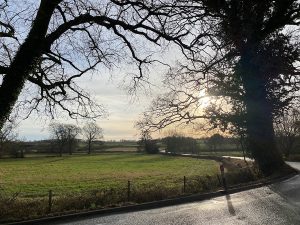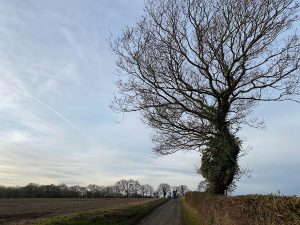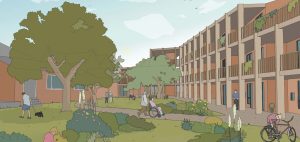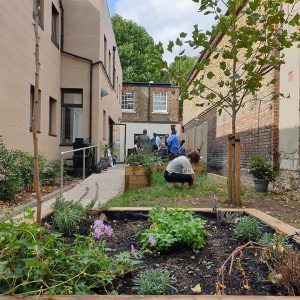What you should know about Biodiversity Net Gain
< Back to InsightsWhat is the new Biodiversity Net Gain legislation?
Creating and improving natural habitats is becoming mandatory under the new Biodiversity Net Gain (BNG) legislation. This change to the planning system requires most developers in England to achieve a measurable 10% increase in biodiversity on their sites. This protection of nature is a fundamental change to the planning system; its aim is to ensure that all new developments contribute to conservation and improvements of the natural landscape and environment.

What type of sites are affected by the new Biodiversity Net Gain legislation?
The mandatory requirement of achieving a 10% increase in biodiversity will come into place from February 2024 and applies to both large and small developments, with very few exemptions. Small sites, projects of dwellings of up to nine houses or on a site of less than 0,5 hectares, are exempt until April 2024. This means that developers, planners and stakeholders all have to engage with and adjust to this new legislation, and make biodiversity a priority for any project from the outset.

How to achieve Biodiversity Net Gain?
Successfully achieving 10% biodiversity net gain requires biodiversity to be considered through the development process, starting at site selection and feasibility stage. BNG is measured using the Biodiversity Metric which calculates the value of the habitats and compares the data pre and post development. Early identification and mitigation of habitat loss can be achieved by specialists such as licensed ecologists.
Habitat size, condition of the habitat, distinctiveness and location are the four factors that are assessed.
There are three ways a developer can achieve BNG of their project:
- The developer can restore and enhance the existing biodiversity on the development site.
- If achieving a 10% increase on the development site is unachievable, the net gain can be delivered through a mixture of on-site and off-site. Off-site can either be on their own land outside the development site, or a developer can buy off-site biodiversity units on the market.
- The last resort is buying statutory biodiversity credits from the government. These credits should only be bought if achieving net gain on or off site is unachievable. The government will use the revenue to invest in habitat creation in England.

What are the benefits of Biodiversity Net Gain?
Delivering BNG on all development sites in England means that any development will result in better quality natural habitats than there was before the development. Larger connected habitats where wildlife and habitats thrive will lead to nature recovery and protection of wildlife. This protection of nature will also naturally lead to increased opportunities for people to connect with nature, something that leads to increased health and wellbeing. Greener neighbourhoods are more attractive places to live, this is an opportunity for architects and developers to work closely with ecologists and rethink how areas between buildings are planned.
“The benefits are clear: trees in urban areas improve the view, aid privacy, provide shade and help reduce pollution and flash flooding; community green spaces bring people together; and local parks and woods are valuable places for people to walk, play and unwind in.” The Wildlife Trust Housing Vision
In addition to the socio economic benefits, the BNG legislation will deliver green jobs and contribute to climate change mitigation through reducing greenhouse gas emissions by storing carbon. Designing with nature, in any form of development, will lead to resilient nature based solutions that benefit people and the planet.

Let’s have a chat about your vision and
how we can help you realise it.
Collective Works are an architecture & design studio. Our network of professionals will create your perfect solution.